7 Types of Ticks in Utah (With Pictures)
-
Chris Dinesen Rogers
- Last updated:
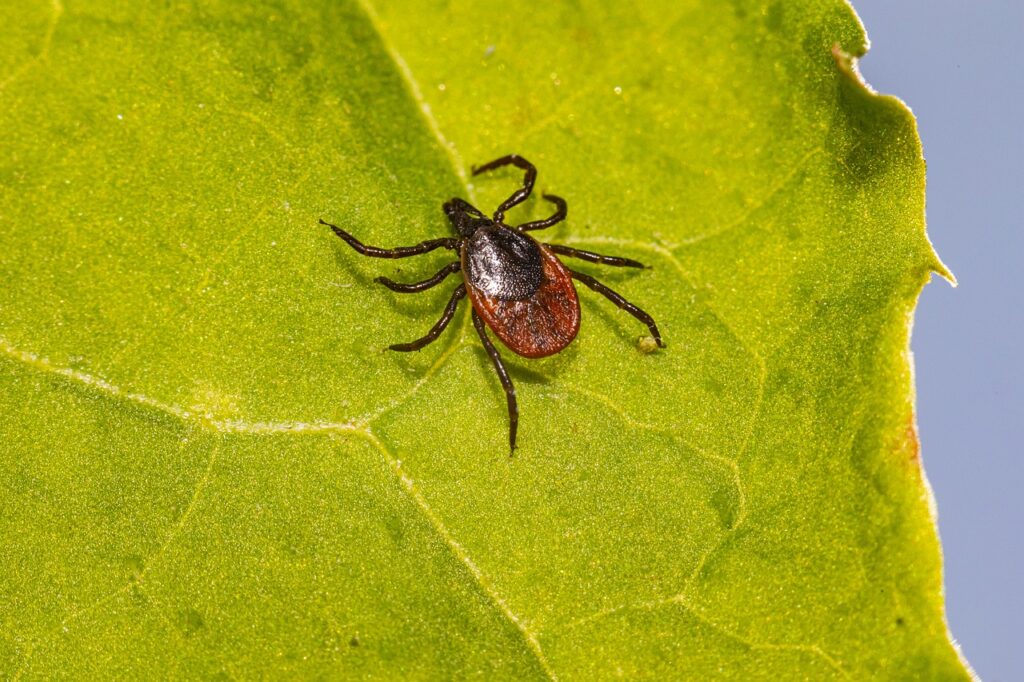
Nothing is worse than feeling something crawling up your leg after spending time outdoors. Ticks are typically more of an issue in the Midwest and Northeast. However, climate change has mixed things up, making these parasites more prevalent in Utah. The main risk of ticks lies with the diseases they carry, of which Colorado Tick Fever¹ is the primary concern in this state.
The harsh Utah winters usually protect its residents from many insect pests. However, climate change has been instrumental in shifting the ranges of some species, making tick-borne diseases more prevalent than in years past. Our guide will review some of the most common ticks in the state.
The 7 Types of Ticks in Utah
1. Winter Tick (Dermacentor albipictus)
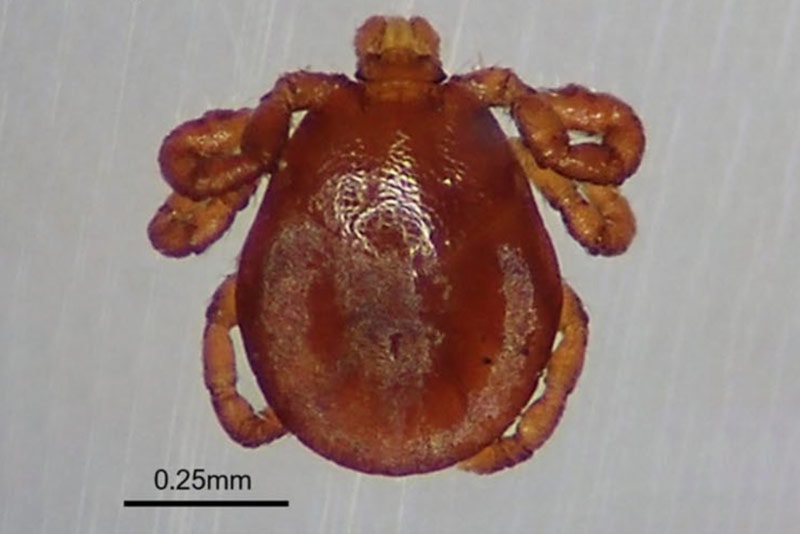
The Winter Tick is appropriately named because it can handle cold weather, giving it an advantage over other parasites. It exists in Utah and all Canadian provinces.1 It’s a parasite for many mammals, including deer, moose, and livestock. Predators, like coyotes, might also become infested, getting infected by their prey.
This tick is more of an issue with cattle than humans. It’s not a major parasite for people, although incidental contact is possible. Fortunately, it doesn’t transmit any diseases to humans.
2. Rocky Mountain Wood Tick (Dermacentor andersoni)

The Rocky Mountain Wood Tick is the primary vector of the disease of the parasite’s name. While our last species has only one host through its life cycle, this one has three.2 Adults target larger animals, including livestock, deer, and people. The parasite is most active when it’s sunny, where it will lie in wait for potential hosts on vegetation.
This tick is a significant threat to humans because of the severity of Rocky Mountain Spotted Fever. Left untreated, the bacterial disease can cause life-threatening complications,3 including encephalitis or inflammation of the brain and kidney failure. The prognosis is grim, with a mortality rate of up to 80%. The parasite also carries Colorado tick fever.
3. American Dog Tick (Dermacentor variabilis)
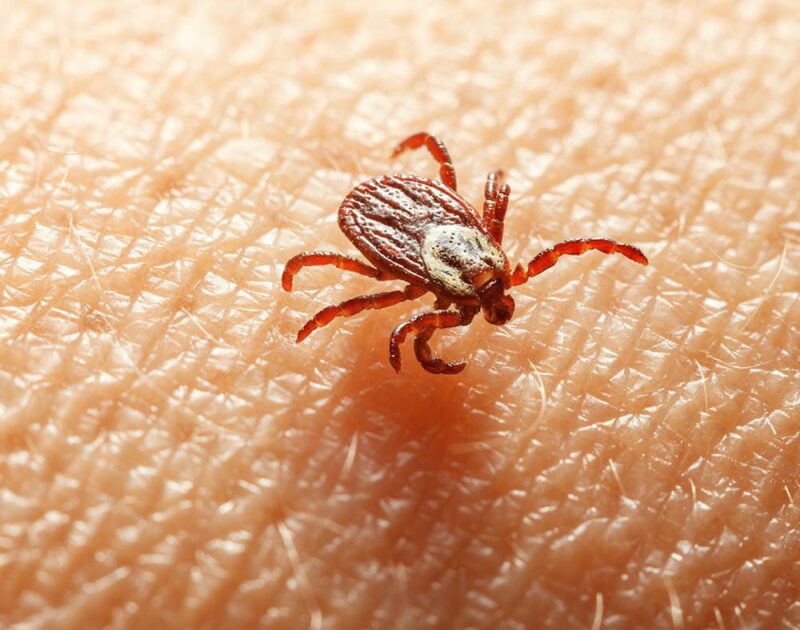
The American Dog Tick is found throughout the United States, including in Utah. It was confined to the eastern part of the continent but has spread west in recent decades. It’s probably one of the most well-known species, if just because of its larger size. It’s most active during early summer. It prefers larger hosts, such as deer, cattle, and humans. It’s a common external parasite of dogs and cats.4
This tick can transmit several diseases, including Rocky Mountain Spotted Fever. A unique but worrisome trait of this species is the anesthetic quality¹ of its saliva, allowing it to remain attached to its host undetected. It can also complete its life cycle indoors, making it a year-round threat.
4. Rabbit Tick (Haemaphysalis leporispalustris)
The Rabbit Tick is another widespread species, whose name implies. It resembles the American Dog Tick because of its size and shape. Its main hosts are hares and rabbits. This parasite exists throughout North and South America. Fortunately, it is mainly host-specific and doesn’t normally infest humans. However, it still is a parasite of concern.
Like many ticks, this species can transmit pathogens or disease-causing agents, including Rocky Mountain Spotted Fever.
5. Western Blacklegged Tick (Ixodes pacificus)
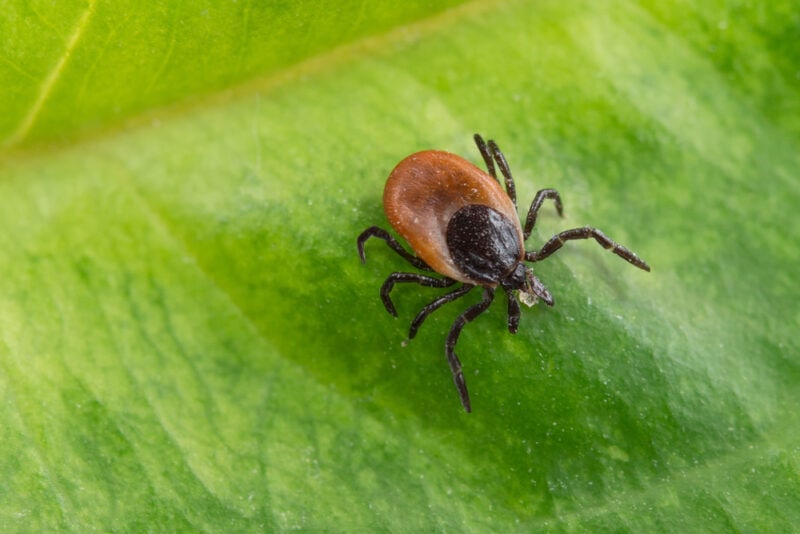
The Western Blacklegged Tick is found primarily in this part of the country, including Utah. It’s also known as the Western Deer Tick. It is something of a misnomer, given this parasite prefers smaller hosts like rodents and even lizards. It isn’t a significant threat to humans, although it is a carrier of Lyme disease. You’re more likely to encounter it in wooded areas than in open fields.
Unfortunately, the ticks are small and easily undetected. However, it must remain attached at least for 36 hours to transmit the disease-causing bacteria.
6. Soft Ticks (Ornithodoros spp)
This genus covers a variety of soft-bodied ticks. They don’t have external jaws, so you may not even feel one biting you. They typically target larger animals, including livestock and dogs¹, although they don’t usually feed on humans. Pets can get bacterial ear infections from this parasite. That is its primary threat to animals and people instead of spreading disease.
However, humans can get tick-borne relapsing fever (TBRF) from soft ticks if they stay in rodent-infested cabins. Symptoms of this chronic, bacterial condition resemble the flu, with nausea and muscle aches typical. These species live primarily in the western part of the country, including Utah.
7. Brown Dog Tick (Rhipicephalus sanguineus)
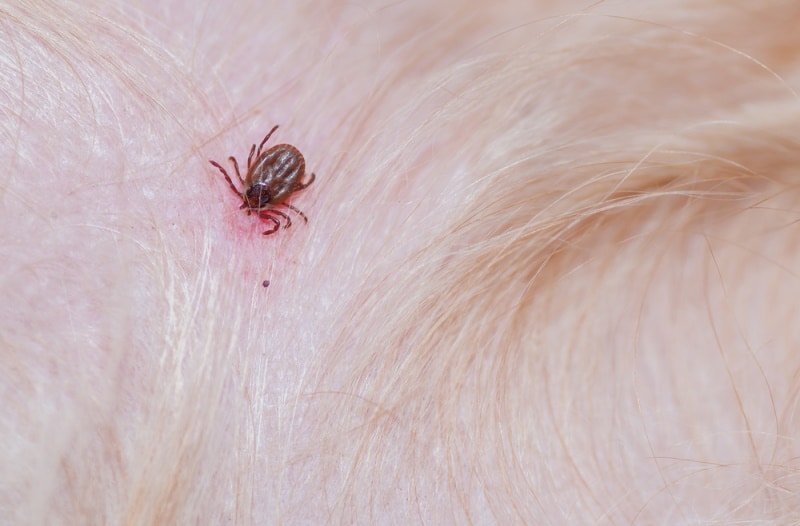
The Brown Dog Tick is probably one of the most common species in the world. This species is host-specific, with canines as its preferred host, although people and cats are occasionally infected. Another common name for this parasite is Kennel Tick because it often occurs in these places. This species represents a significant threat to dogs.
The parasite can transmit several diseases to pets, including canine ehrlichiosis. This condition can cause widespread inflammation in several major organs, including the brain. The tick can also carry Rocky Mountain Spotted Fever. Unfortunately, it can complete its life cycle indoors.
Tips for Avoiding Ticks
While not all ticks carry disease, it still behooves you to prevent getting bit, if just to reduce your risk of infection. Over 90% of Americans agree and take some measures to protect themselves. Wearing long-sleeved shirts and pants will put a barrier between you and ticks. If you’re walking in the woods, you should also consider wearing a hat.
Using a repellent with DEET is one of the best ways to prevent tick bites. It’ll protect you for 2–10 hours. However, products with concentrations over 50% offer no additional safety. You should always treat your pets with flea and tick prevention¹. Remember that you and your dog or cat can get ticks even in your backyard.
Grassy areas like old fields or prairies are home to ticks. However, you can also find them in forests and caves. Wherever deer, rodents, or other hosts live, you’ll likely find these parasites. Be sure to check yourself and your pets after spending any time outdoors. You may find it helpful to wear light-colored clothing to make it easier to spot any freeloaders.
Conclusion
Utah may not be a hotspot for ticks. However, it’s still essential to take precautions against these parasites. It doesn’t pay to neglect protecting yourself and your pets from the risks of tick-borne diseases. Fortunately, you have many options for ensuring a safe time outdoors. You needn’t avoid a long walk in the woods with your canine companion.
You Might Also Be Interested In:
Featured Image Credit: Erik_Karits, Pixabay
Contents

